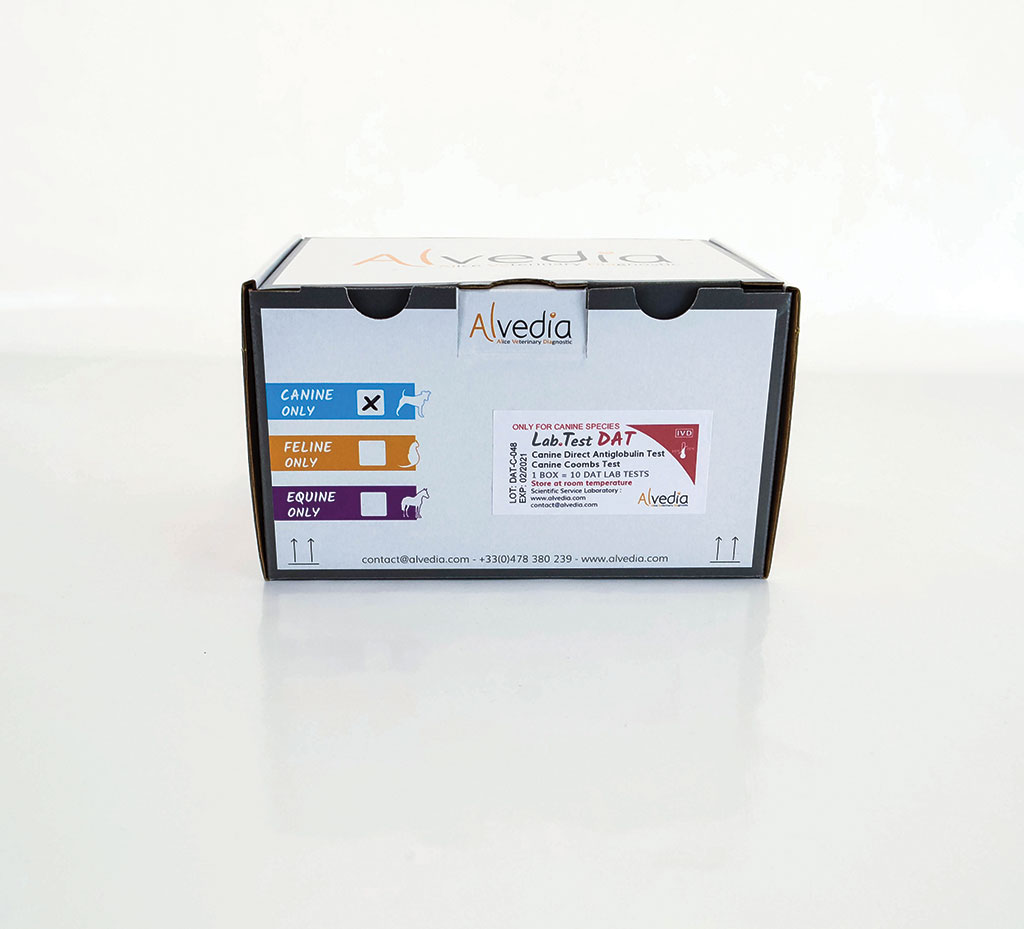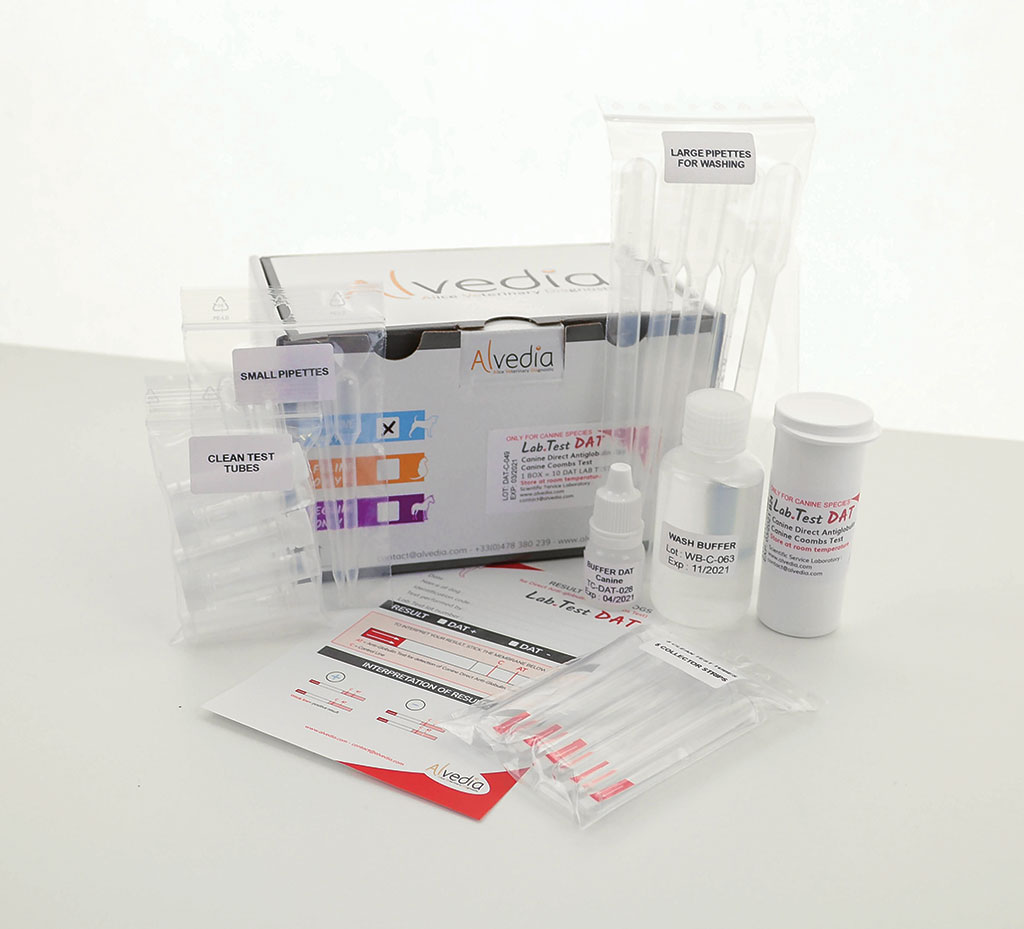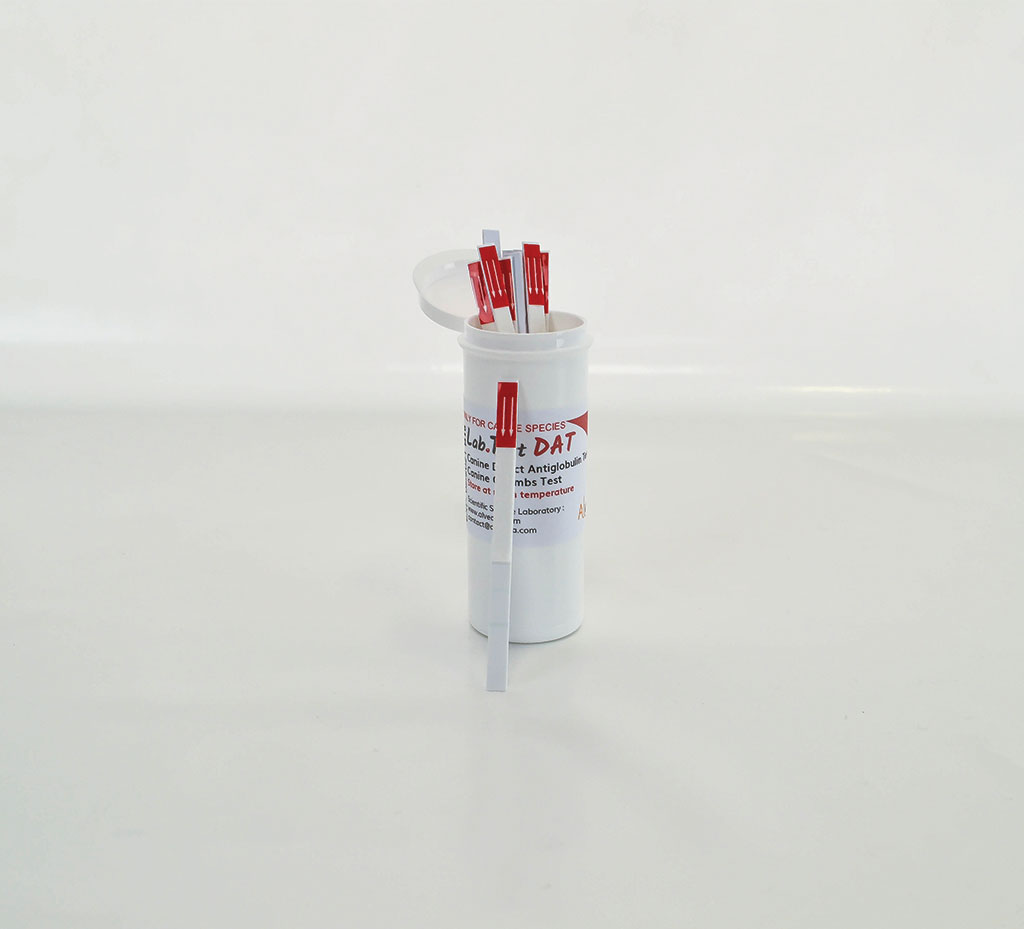Canine DAT
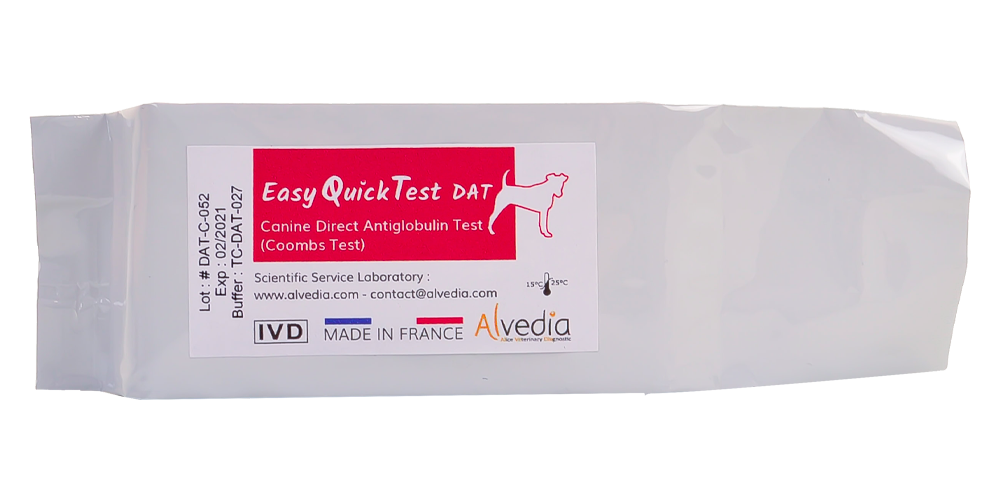
AVAILABLE IN LAB TEST VERSION
Description
Importance of DAT
A Coombs Test or Direct Antiglobulin Test (DAT) is performed to detect the presence of antibodies against red blood cells. It is used in the diagnosis of Immune-Mediated Hemolytic Anemia (IMHA). IMHA is the most common cause of hemolytic anemia in dogs.
Benefits
- 2O minutes procedure.
- All material included.
- Time saving.
- Easy handling.
- Reliable results.
- Easy interpretation.
- Snap result.
- Our technology
The classical technology uses incubation of washed red blood cells suspension with antisera that causes agglutination. Our immuno-chromatographic technology will detect the presence of immunoglobulin (IgG & IgM) and/or C3 components binding to the RBC surface. A positive result indicates an in vivo sensitization and can thus be used to indicate the presence of auto-immune antibodies.
Our canine Direct Antiglobulin Test (DAT) aims to detect the presence of immunoglobulins and/or C3 components on the surface of patient’s red blood cells (RBCs).
MATERIAL
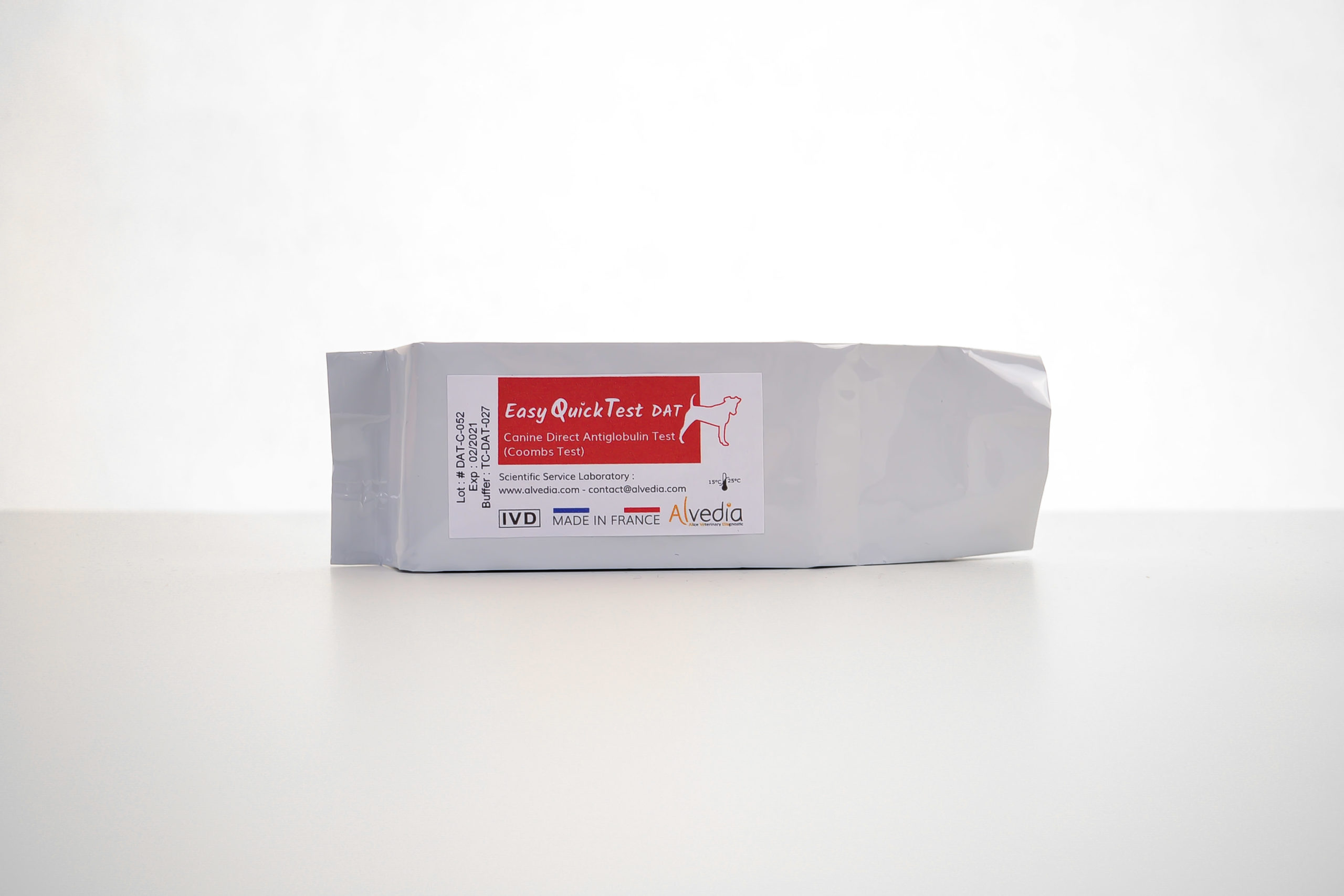
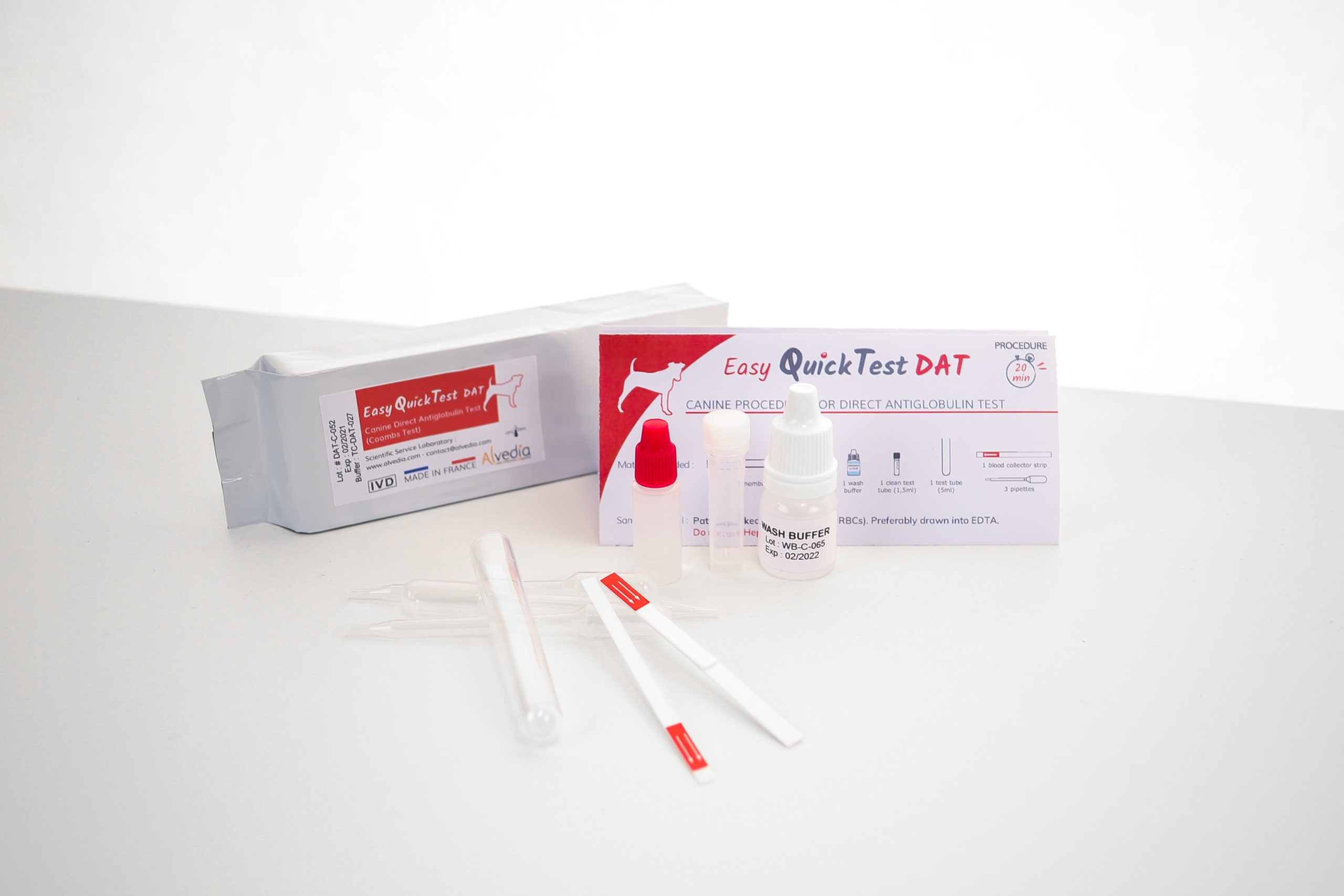
Material provided :
-
1 DAT membrane
-
1 buffer solution
-
1 wash buffer
-
1 test tube (1,2 ml)
-
1 test tube (5 ml)
-
1 blood collector strip
-
3 pipettes
User's guide
RESULTS

LABTEST VERSION
– Same technology
– Total flexibility
– Cost effectiveness
The LabTest version can be described as a “bulk packaging”.
The client will get multiple tests in the same box but can use it per unit.
The price is decreased but the flexibility remains the same as the individual Quick Test version.
Material provided :
-
10 DAT membranes
-
10 test tubes (5ml)
-
1 buffer solution
-
1 wash buffer
-
10 test tubes (1,2 ml)
-
10 blood collector strips
-
20 small pipettes
-
20 large pipettes
PRODUCTS INFORMATION
Easy Quick Test DAT Canine (Direct Antiglobulin Test) – EQT-DAT-C – 1 TEST (individual Packaging)
Lab Test box DAT Canine (Direct Antiglobulin Test) – LT-DAT-C – 10 TESTS / BOX
Movie procedure
movie procedure
Scientific Information


